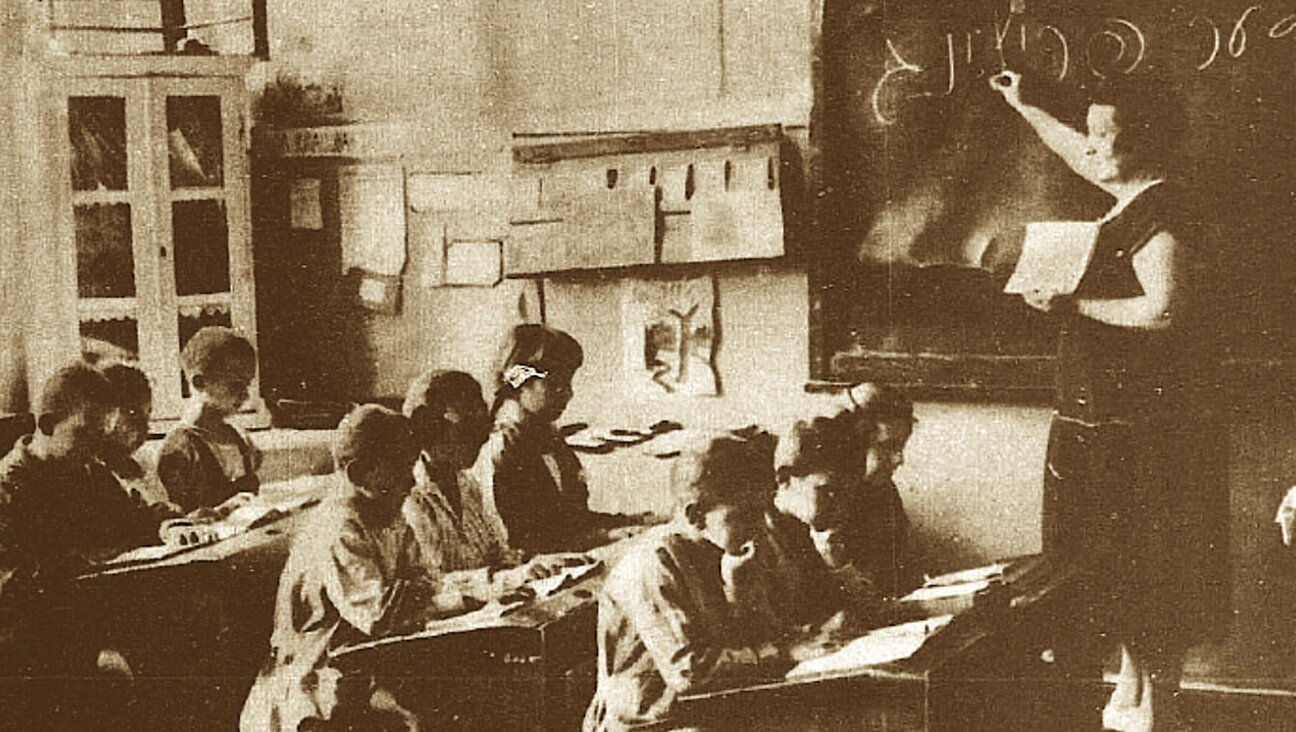Wearing a Black Ribbon Helped One Jewish Widow Mend Her Soul

Image by thinkstock
A week after her mother died, my friend called with an unusual request. “Can I borrow the black ribbon you used when Rod died?” Though she had been given one at the funeral, she had misplaced it amid the confusion of the shiva. “I want to keep wearing it,” she explained. “If I remember correctly, you wore yours after his funeral and said it gave you comfort.”
“You’re right, and I’m impressed you still remember,” I told her.

Nancy Kalikow Maxwell
Four years ago, following the death of my beloved husband of 25 years, that tiny swatch of grosgrain had been a source of profound solace to me. Though many Orthodox (and some non-Orthodox) rabbis decry the use of this substitution for keriah, the ritual of tearing one’s garment, I credit it with helping get me through the worst time of my life. “Shallow and pitiably trivial,” Rabbi Maurice Lamm called their use in “The Jewish Way in Death and Mourning.” “A petty gimmick.” But to me the ribbon was more gift than gimmick.
One of the reasons Lamm and others decry the use of these ribbons is that they deprive the mourner of the powerful impact of ripping the garment. In an attempt to replicate this effect, mourners are supposed to shred the ribbon themselves before pinning it on. But for me, the therapeutic aspect came not from tearing, but from wearing.
From the moment I first affixed it to my black dress at the funeral, I thanked Judaism for bestowing upon me a visual representation of my loss. When a Catholic friend who was widowed around the same time as me saw it, she told me she was envious; her religion provided her with no such outward symbol of her grief.
So powerful was the ritual, I chose to continue displaying the ribbon during sheloshim, the 30 days constituting the next mourning period. Pinning and unpinning that ribbon each day became a welcomed burden. I derived perverse pleasure from the daily annoyance of stabbing my shirt (and often my finger) as I attempted to locate just the right spot.
Especially after returning to work, the ribbon helped me cope. Spotting the ribbon in my reflection or untangling it from my necklace reminded me throughout the day that, though I had resumed my normal routine, I was still an official mourner. Those dark circles under my eyes were to be expected. Being curt with my assistants was understandable. Unlike other cultures that encourage a mourner to “get over it,” Jewish ancestors knew it took at least a month to begin confronting such a loss.
The ribbon was particularly helpful to me during crying jags, which erupted randomly when I was alone in the car. During these driving-while-crying episodes, I would pull over, finger my ribbon, give in to my sorrow and wail. Sometimes I would even graze my finger lightly over the end of the pin. I never broke the skin, but at those moments I could understand what some believe to be the origin of keriah — to substitute for the pagan custom of mutilating one’s flesh and tearing out one’s hair from grief.
My college-age daughter continued wearing her ribbon when she returned to school. Dubbing it her “be-nice-to-me” button, she found that her fellow students treated her more respectfully upon seeing it. One of her professors excused her absences when he saw it, no further evidence required.
We both noted that cashiers and waitresses were especially solicitous. Though they may not have understood its significance, they sensed that the swatch had something to do with mourning. One waitress patted my hand gently when she placed the check on the table. Another presented me with a slice of chocolate cake I had not ordered. “It’s on the house, honey,” she said.
Though the sympathy — and the free dessert — was appreciated, by the third week, wearing the ribbon became tiresome. I began counting down the days until I could unfasten that button for good. Finally, at dusk on the 30th day, I unpinned the ribbon for the last time. Taking a deep breath, I flung it into the wastebasket, the sound reminding me of the thud of dirt hitting his coffin.
But in front of the television that evening, I couldn’t concentrate on anything but that ribbon buried amid wads of tissue. Maybe I should save it as a souvenir to remind me of my loving, caring, wonderful husband. Perhaps seeing it will fill me with satisfaction over how bravely I had confronted his loss.
Or would it bring to mind his horrific battle with cancer and his torturous, lingering death? Perhaps pain and loss will forever be associated with that piece of fabric. Yes, I decided, that seemed more likely. My keriah ribbon had served its purpose, and now it was time to discard it and move on. The ribbon remained in the wastebasket, carted out with the weekly trash.
“Sorry, I don’t have the ribbon anymore,” I told my friend. “I could make you one. Let me take you out to lunch and I’ll give it to you.”
I knew just the restaurant I would choose, and which waitress I would request.
Nancy Kalikow Maxwell is a retired librarian and freelance grant writer who lives in Plantation, Fla.

I hope you appreciated this article. Before you go, I’d like to ask you to please support the Forward’s award-winning journalism this Passover.
In this age of misinformation, our work is needed like never before. We report on the news that matters most to American Jews, driven by truth, not ideology.
At a time when newsrooms are closing or cutting back, the Forward has removed its paywall. That means for the first time in our 126-year history, Forward journalism is free to everyone, everywhere. With an ongoing war, rising antisemitism, and a flood of disinformation that may affect the upcoming election, we believe that free and open access to Jewish journalism is imperative.
Readers like you make it all possible. Right now, we’re in the middle of our Passover Pledge Drive and we need 500 people to step up and make a gift to sustain our trustworthy, independent journalism.
Make a gift of any size and become a Forward member today. You’ll support our mission to tell the American Jewish story fully and fairly.
— Rachel Fishman Feddersen, Publisher and CEO
Join our mission to tell the Jewish story fully and fairly.
Our Goal: 500 gifts during our Passover Pledge Drive!
























